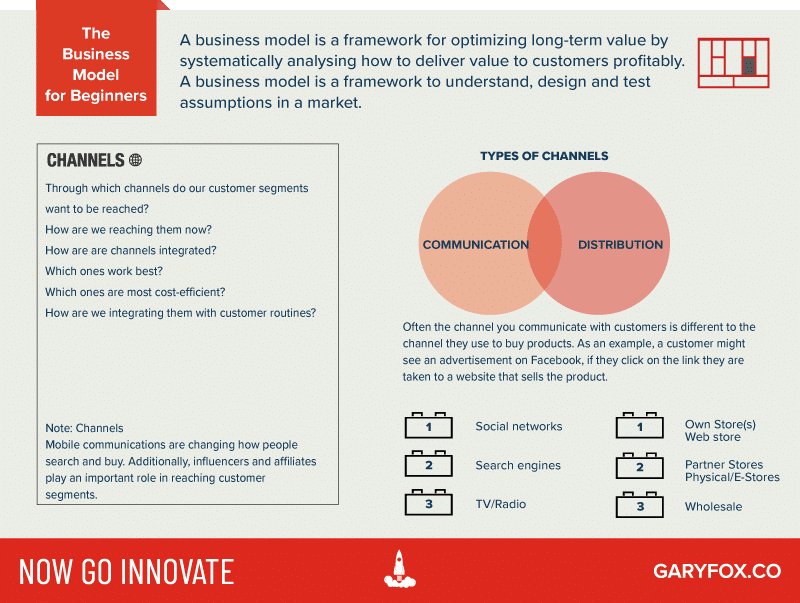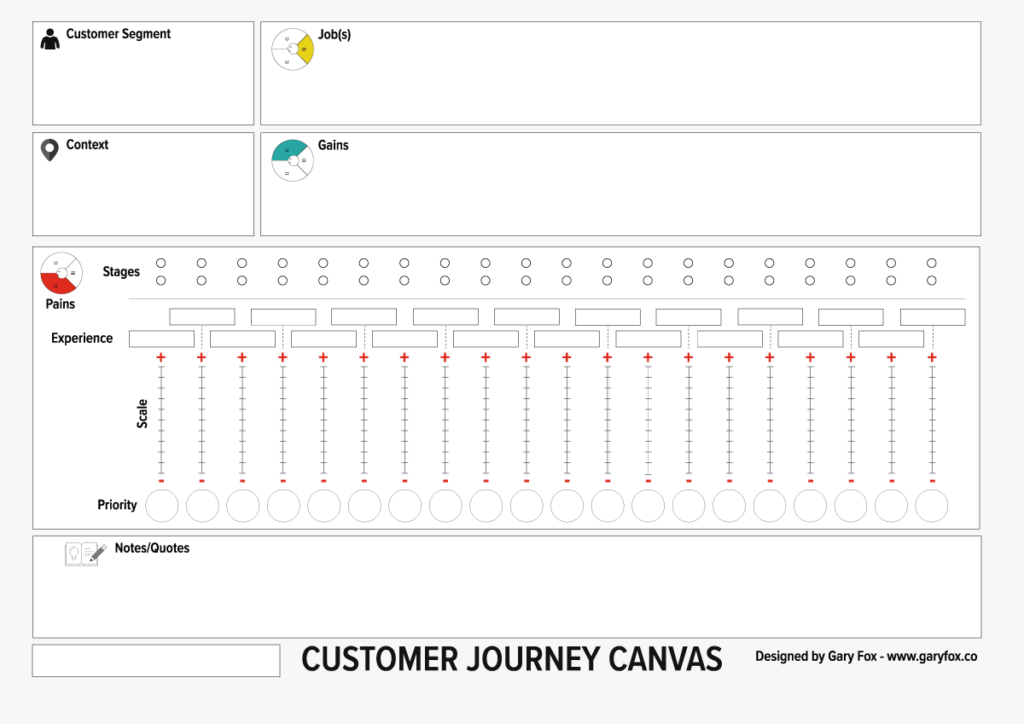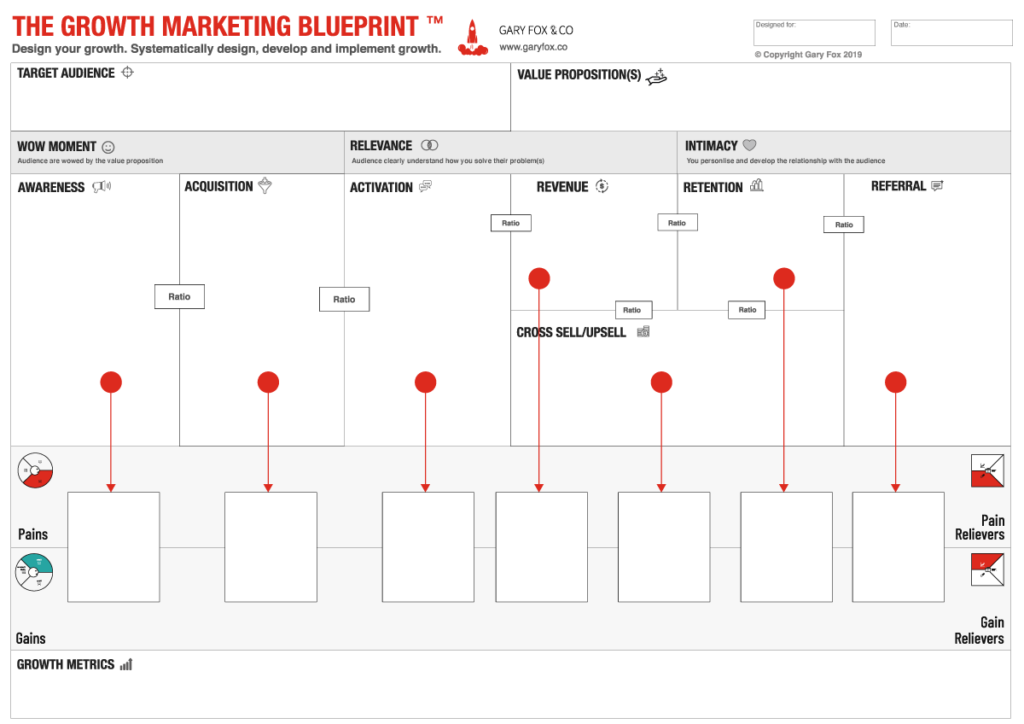At the basic level, business model channels Are the mechanism for how we communicate with and deliver our value propositions to our customer segment. What channels have in common is that they are touchpoints that play a critical role in customer satisfaction and customer retention. Channels are typically broken down into types and phases.
Table of Contents
Business Model Channels

In the previous sections we identified that our customers have:
- Job(s) they are trying to achieve – Goal(s).
- Pains or frustrations that they have in the process of achieving their goal(s).
- Gains – desired outcomes and motivations for achieving their goal(s).
Based on this, you have created value propositions that offer the best solution to help them achieve their goals. Furthermore, a positioning statement to persuade and influence customers. Now you need to create a plan and decide how you take your product to the market (business model channels – distribution) and how you will plan your marketing to make customers aware of your product (business model channels – communication).
Using the information on customers goals, pains and motivations you can also craft communications that:
- demonstrate you understand them (their goals/pains)
- appeal to their motivations and therefore the underlying emotions that will influence them to buy.
- create customer experiences that fit your target market.
Distribution Channels
Distribution channels are how you get your product to the customer. If you have a digital product or service (e.g. Software as a Service SaaS), then you might distribute and sell your product on your website. However, for physical products distribution and sales channels can be very different e.g. order online and then pick up in-store.
Another way to think of a distribution channel is who is going to deliver the product to the customer. This can be different from where the product is purchased.
Distribution channels = how the product is (physically or digitally) delivered (distributed) to the market and ultimately to the customer.
As an example, Amazon would hold a digital copy of a Book on its servers that can be distributed to a Kindle after purchase.
Alternatively, Amazon will hold physical copies of a book in its distribution centres. After purchasing the book online, the book is then sent out for delivery.
Examples of distribution channels:
- Wholesaler
- Marketplace
- Retailer
- eTailer
- Affiliate
- Website
Communication Channels
Reaching your customer segment and being able to communicate with then is vital to growing your business. It is through the communications that you explain your value proposition, influence potential customers and secure sales.
Your goals in using communication channels are:
- Raise awareness of among customers about your business and product or service.
- Communicate clear and in a short amount of time your value proposition.
- Influence customers to either buy your product or give you permission to communicate with them.
- Customers often require a degree of persuasion and that is done through a marketing funnel.
- After purchasing your product, communication channels are used to maintain a relationship and have repeat purchases.
Examples of communication channels:
- TV
- Radio
- Billboards
- PR
- YouTube
- Snapchat
- Website
- Communities
The Channels and The Customer Journey.
Example For A Book
Let’s imagine you are an author who has produced a new science-fiction book. Furthermore, we have the book available in two versions, one in print and the other electronically (digital) as an eBook e.g. via Amazon Kindle. To keep it very simple let’s say that it is aimed at young adults (16-25 as a simple demographic criterion).
We can imagine different scenarios about distribution and communication channels (business model channels):
- Jenny – sees a review of the book as an Ad on Facebook and then goes onto her Apple iPad and orders the eBook in the Apple Book Store. In this case, Apple Book Store is the distribution partner and Facebook is the communication channel.
- Charles – hears a review of the book on a radio show and then walks into a book shop and buys the book. The radio show is the communication channel and the book store is the distribution channel).
- Claire – reads a review of the book on Goodreads and then decides to searches for the book on Google. She clicks through to your website and then signs up for a free first chapter. A week later, after having read the chapter, she walks into a local book store. The book is priced at $14.99. While there, she looks up the price on Amazon, it is listed at $11.99. Finally, she buys the book on Amazon. Google/Goodreads/Website are communication channels and Apple Books is the distribution channel.
- Robert – wants to buy a book for his daughter. He is at an airport and decides to walk into the book store and buys the book there. The book store is the communication channel and distribution channel.
- Hannah – is shopping on Amazon and sees your book in her recommendations. She clicks on and adds a print version of the book to her cart and then finishes her online shopping and buys the book.
What we can understand from these scenarios are:
- online affects offline purchases.
- sometimes the buyer isn’t the consumer – Robert is the buyer, but his daughter is the ‘consumer’ of the book.
- distribution channels are not always the same as communication channels. Hannah has the same communication and distribution channel (they overlap) but Charles doesn’t.
- in the case of Claire, we can understand that sometimes purchase decisions are a journey and not always simple. The implications are that the brand, value proposition and communications need to be integrated across multiple channels.
Mapping Customer Purchase Journeys

The Customer Journey Canvas can be used for a wide range of uses. However, one of the most powerful ways is to map the purchase journey. While some journeys can be short others can be more complex, it will depend on the product or service in question and the context.
Usually, there are three main touchpoint types in commerce situations.
- Stimulus: the very first-time customers become aware of a given product or service.
- First moment of truth: the decision to buy a product or service.
- Second moment of truth: the first experience customers have of using a product or service.
There is a better way to think about market segmentation and new product innovation. The structure of a market, seen from the customers’ point of view, is very simple: They just need to get things done, as Ted Levitt said. When people find themselves needing to get a job done, they essentially hire products to do that job for them.
Clayton Christensen
Planning Communications

Communication channels are where and how you acquire your customers. In other words, another term for them is acquisition channels. The only problem with this term is that assumes a one-off transaction and for most businesses, the goal is to build long-term relationships.
The business model channels building block is crucial for at least researching where your customers spend their time online. This forms the basis for how you will reach them to make them aware of your product or service.
Mapping Pain Priorities and Motivations To Marketing
Marketing is all about persuasion, influence, trust and building relationships.
The Growth Marketing Blueprint is a systematic way to plan how to acquire potential customers, convert them and subsequently build a relationship. Unlike most ‘marketing funnels’ it focuses on the full funnel – keeping customers, not just selling to them.
If you used the Customer Journey Canvas earlier, then you will understand the job(s), gains and pains for a customer segment.
The customer journey map can be used in two ways:
- Analyse how the customer journey for existing products and services that you are aiming to compete against.
- Map your existing product/service purchase journey to identify opportunities to improve.
- Improve the after-sales services and relationship
1. Competitor Experiences
If you know at what point customers find buying a competitor product causes frustration or dissatisfaction you can target that with your own process and use to your advantage.
2. Innovating The Purchase Path
There are lots of ways to enhance or even innovate the purchase path and reconfigure services to help customers. This is particularly true for more complex products and services that involve more information, higher levels of risk and longer decision times.
3. Creating The Long-Term Relationship
A lot of companies I talk to don’t know what or how they should be doing with customers after the purchase. Often they might bolt on a community forum or a knowledge base without recognising a much broader strategy and opportunity to develop experiences and relationships.
Benefits Of Building Relationships
In the example given earlier, Claire signed up to get a free chapter for the book. As an author, if you were launching another book you would ideally want to have a database of customers who already liked your work. In the lead up to your next book launch, you would then send out a free chapter, give them details about the launch date and any promotions.
Generating Brand Awareness
If you’re launching a new business or product then nobody will know of your existence until you launch. The first part of your plan, and one of the most important, is to generate awareness and start to communicate with potential customers.
The business model channels building block isn’t necessarily detailed at this stage about which channels are best or how to pick the right ones. You can download that later in this guide.
There are lots of powerful ways to launch your product and gain traction with your market.
See the Launch Canvas and details if you want to plan your product launch. Download it for free.
Key Points For Business Model Channels
- Use the business model channels block to think about channels for communication vs. distribution.
- Research where your customer segments spend their time online.
- Identify what media they read e.g. what content they engage with and where.
- Review what routes they are to market and make notes for later of potential distribution partners.
At the end of the business model channels building block, you should have a clearly described your communication channels and distribution channels.